Apple's June 2023 in review: Vision Pro, Mac Pro, and tech titan fighting talk
In June, Apple's WWDC took place, Apple hit $3 trillion again, there was a slim chance of a tech titan cage match, and the not-so quiet launch of the Apple Vision Pro, too.
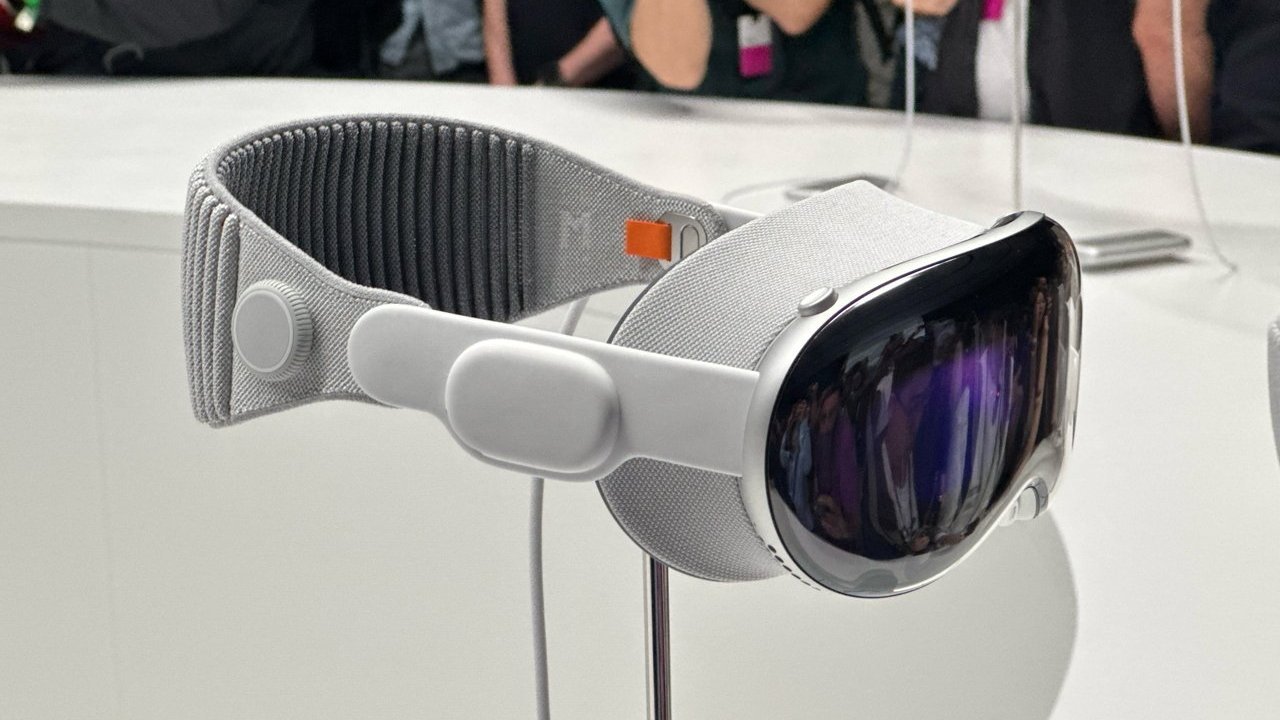
Apple Vision Pro at WWDC 2023
After months of rumors, Apple's WWDC 2023 finally laid all speculation to rest about the iPhone maker's next potentially world-changing platform. The biggest thing to come out of WWDC was hardware, specifically the Apple Vision Pro.
Effectively a VR headset with considerable mixed reality prowess, the Vision Pro is a significant piece of kit. Equipped with a micro-OLED backplane, 12 cameras, five sensors, and six microphones, the headset even qualifies as Apple's first 3D camera
Two interesting design choices for the device are the Digital Crown borrowed from the Apple Watch and its EyeSight system. The Digital Crown lets users gradually shift from a full-blown app experience to a less immersive version that still gives you a view of the room you're in.
EyeSight is an oddity, as it's an external display that shows a digital recreation of the user's eyes, which match up to wherever they are looking at inside the headset thanks to eye tracking. It's an unusual addition, but one that can inform other people of when the user's looking at them, and also one that could make the headset more usable with others.
Less magical is Apple's power system, with a replaceable battery that lasts for up to two hours at a time, that connects to the headset by a cable. It's a decision that helped Apple deal with weight and balance issues, but it's not exactly as sleekly incorporated as with other Apple products.
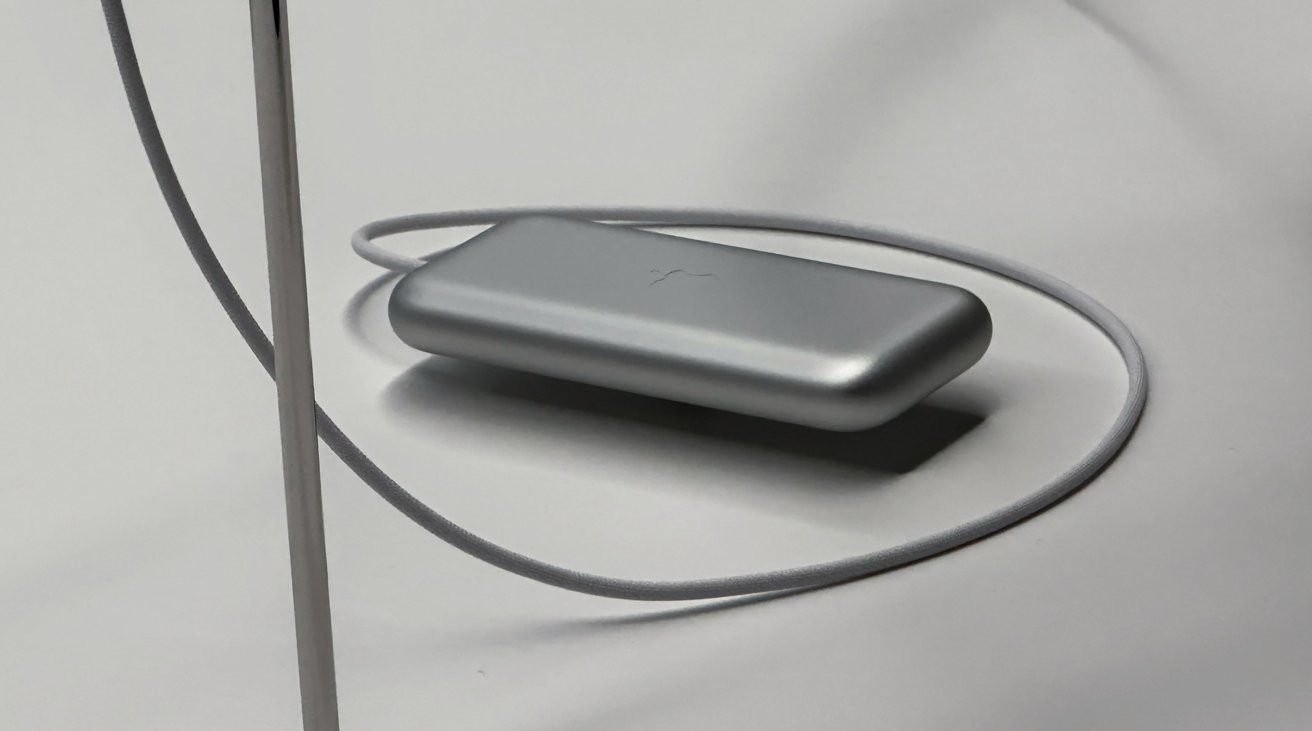
The battery for the Apple Vision Pro
To go with the headset, Apple introduced a new operating system, visionOS, which developers were able to try out in an Xcode beta. The headset will also have its own App Store, with over 100 Apple Arcade games at launch and even support from Disney.
Developers also have the opportunity to get hold of a developer kit to put their apps through their paces before the launch, due in early 2024.
To go with the high specifications, there's also a wallet-busting price tag of $3,499. Apple CEO Tim Cook justified the pricing by referencing the "mind-blowing" engineering, but admitted it may be hard for potential customers to afford.
As you can expect from an Apple launch, especially for an unreleased item, third parties jumped on the news.
After trying to steal Apple's thunder with a Meta Quest 3 tease before the event, natural competitor Meta's CEO Mark Zuckerberg told employees that Apple didn't bring anything new to the table that Meta hasn't "already explored." The showcase using a "person sitting on the couch by themselves" was not the "vision of the future of computing" Zuck anticipated.
Naturally, accessory producers were quick to peddle their future wares for the headset shortly after the announcement. BandWerk introduced a leather band within a day, with Casetify joining in later in the month.
Caviar also thought that the $3,500 price wasn't enough, claiming it would sell a customized version with gold trim and a leather head mount. This upgrade would cost the potential owner a mere $40,000.
M2 Ultra and the Mac Pro(?)
Apple also used WWDC to launch other Mac hardware, with varying levels of success.
Arguably the most successful Mac launch was of the 15-inch MacBook Air, which added a new size option to an already impressive notebook family. No longer did you have to look to the MacBook Pro for larger displays, as you could get one without the considerable extra outlay.
The Apple Silicon lineup continued using the same pattern for releases for the M2 as the M1, with Apple bringing out an M2 Ultra. Just like the M1 Ultra, the M2 Ultra is effectively two M2 Max chips attached using an interconnect, and therefore doubling the core counts and resources.
This resulted in the update of the Mac Studio to use the new M2 Ultra chip, but also the long-awaited introduction of the Apple Silicon Mac Pro. This was supposed to be a celebratory moment, but as it turned out, it was actually a damp squib.
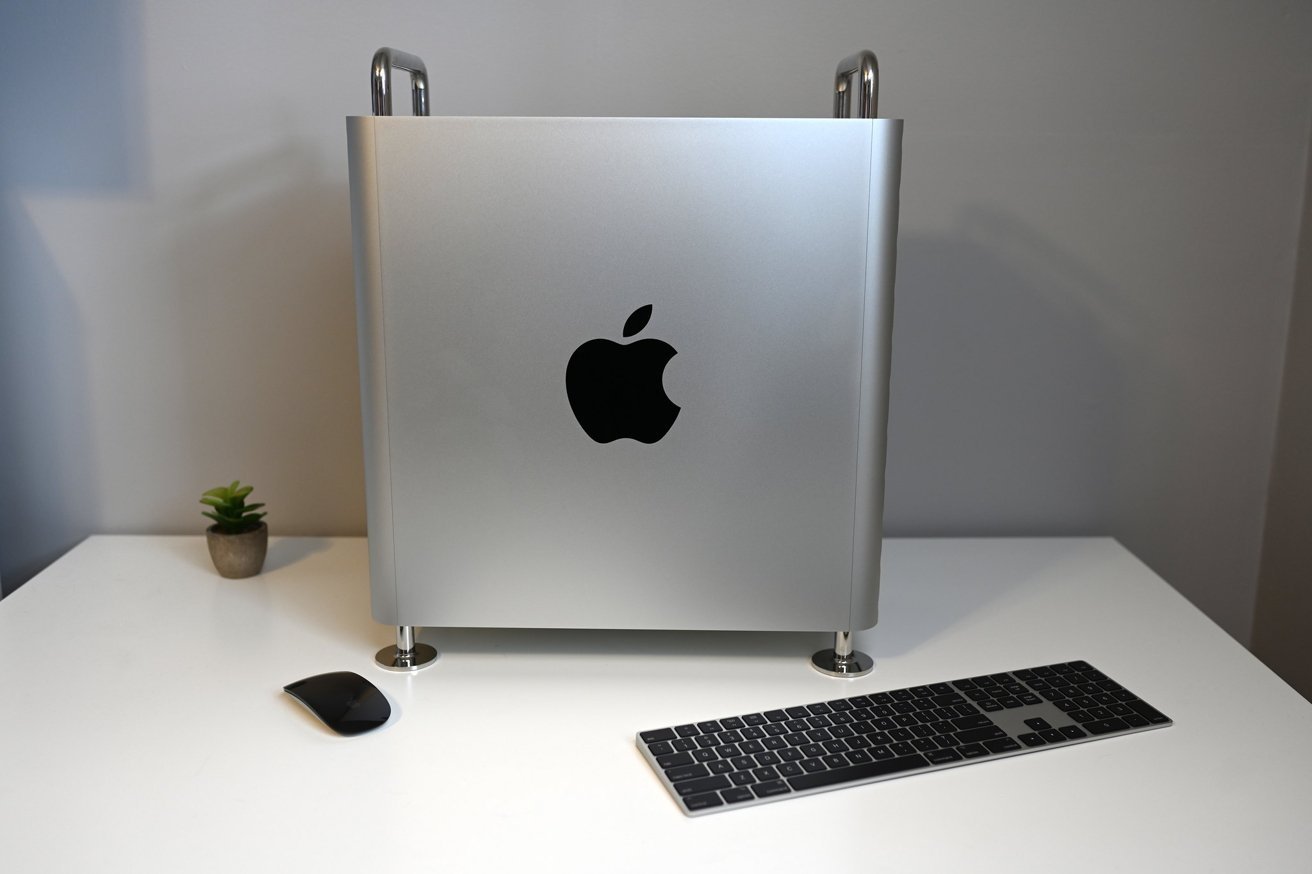
The Apple Silicon Mac Pro looks just like the old one.
The Mac Pro retained the styling of its Intel counterpart, but lost out in many ways, such as having a lower amount of configurable memory that you could no longer upgrade yourself.
It also didn't help that the Mac Pro with the M2 Ultra launched alongside it, as the only real reason to get the New Mac Pro at a greater expense is to be able to install PCIe cards. And even then, you can't slip in a graphics card to replace the Apple Silicon's GPU, because there's no support for that.
The new Mac Pro certainly offers more performance than the old Mac Pro with Intel, but customers really needed to justify buying it over the cheaper and just as nippy Mac Studio.
Other WWDC announcements
Hardware is usually secondary to the software-centric changes WWDC focuses on. Despite the massive reaction to the Apple Vision Pro, Apple still had a ton of other software news to disclose during the event.
The main operating system that Apple users will care about is iOS, and iOS 17 was shown at the time to continue Apple's push for more personalization, such as the use of Contact Posters, as well as enhancements like FaceTime answerphone. StandBy rethought the Apple Watch Nightstand mode for the iPhone, an included Journal app could help user's mental health, and Siri could be used without the prefix of "Hey."
A persistent thorn in user's sides, Apple also addressed Autocorrect, with it becoming more intelligent and finally removing the ducking problem that frequent expletive users run into.
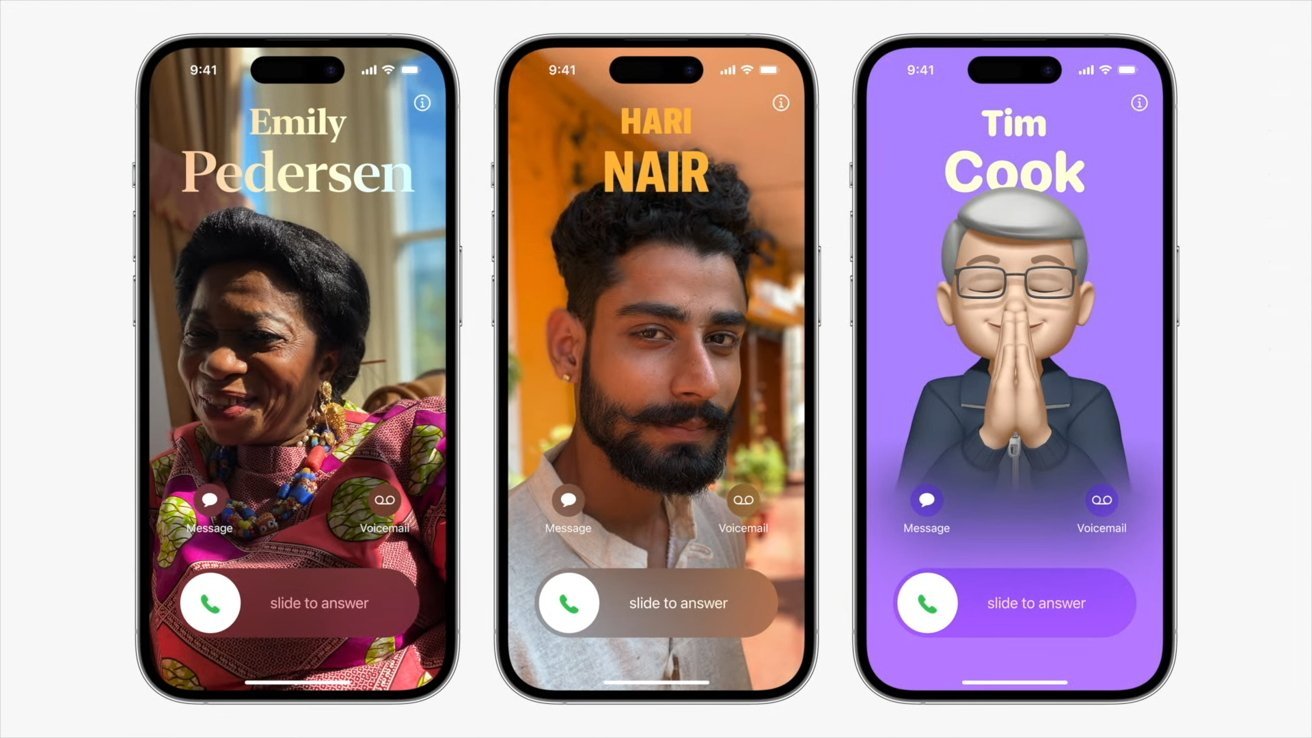
iOS 17's Contact Posters
For iPadOS 17, Apple said it would introduce Live Activities, interactive widgets, the Health app, changes to Stage Manager with flexible layouts, and some of the iOS 17 changes, too.
Sonoma was the name given to macOS 14, with its changes including a video conferencing upgrade in Presenter Overlay, an update to widgets, and more Safari privacy features. The inclusion of the Game Porting Toolkit used emulation to run Windows games in macOS, to give developers a way to see how their games run on a Mac before producing a native version.
Apple TV owners would also enjoy seeing the same sort of slow-motion drone shots on their Mac desktop, too.
Speaking of Apple TV, tvOS 17 gains FaceTime support, powered by Continuity Camera. Calls could be held on a TV, using a nearby iPhone's camera and microphone.
Continuity Camera also enables another feature, Apple Music Sing, which shows users on the screen complete with filters as they karaoke away the night.
The Apple Watch benefits from the milestone introduction of watchOS 10, which rethought how to interact with the wearable by introducing the Smart Stack for widgets. Apps were given a facelift to take advantage of the screen estate on newer Apple Watch models, while fitness changes included cycling workouts and Bluetooth-enabled cycling accessory support, and mental and vision health assistance.
Unusually for Apple, instead of making the developer beta only available to developers, as the name implies, it instead made the iOS 17 developer beta available to all iPhone users. It was unclear whether it was a mistake or intentional, but Apple left the opened-up access alone.
It may have enjoyed having a much larger pool of testers than usual.
$3 trillion, and lawsuits to spend it on
Not content with being the first company in the world to be valued at $3 trillion, Apple performed the same feat again. After a year of investor jitters eroding the valuation, driven by supply chain issues, Apple returned to the $3 trillion dollar figure at the end of the month.
One of the defining factors that helped Apple reach the figure quicker was its Apple Vision Pro announcement, which helped garner more interest from those previously spooked investors.
If nothing else, it did at least give analysts at Wedbush the opportunity to write "Apple is playing chess while others play checkers" in a note to investors.
It's a good thing Apple is so wealthy, as it wasn't a great month lawsuit-wise.
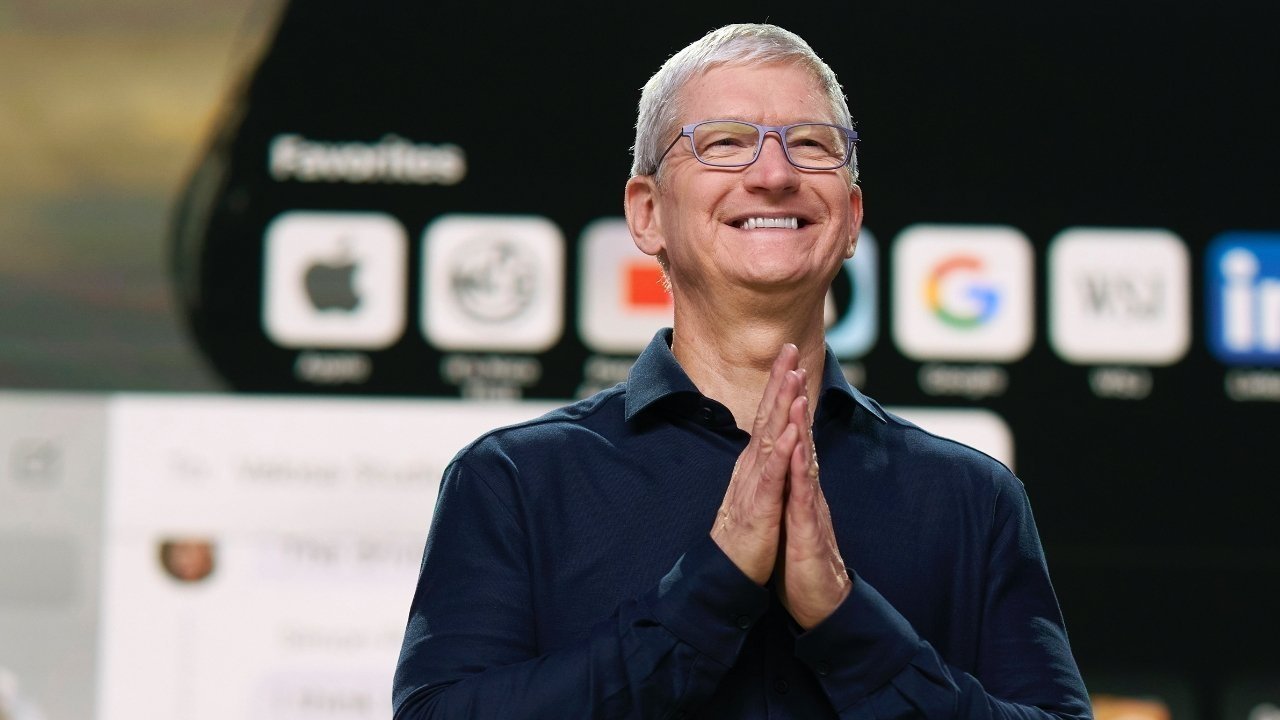
Apple CEO who may have mentioned China a few times during analyst conference calls, Tim Cook
On June 26, the U.S. Supreme Court declined to hear a challenge to Caltech's Wi-Fi patents, effectively ending a decade-long legal battle. The decision put Apple on the hook for $1.1 billion.
Apple also failed to convince a court to overturn a lawsuit alleging Tim Cook defrauded shareholders by allegedly withholding knowledge of falling demand in China. In a 2018 analyst call, Cook admitted to seeing sales pressure in some markets, but said "I would not put China in that category."
Apple insisted Cook's comments were opinions and therefore protected, and that the claim "fails to plead any actionably false or misleading statement."
Musk Vs Zuck, or not
The strangest story of the month stems from an online spat that threatened to take it offline.
Tesla and then-Twitter CEO Elon Musk wasn't too happy about there being a Twitter alternative circulating around the rumor mill, one that would later arrive with the name "Threads." Cue online trash-talking from Musk.
After learning Meta CEO Mark Zuckerberg was learning Jiu-Jitsu, Musk took the logical approach and declared "I'm up for a cage match if he is lol."
![Martial artist and Meta CEO Mark Zuckerberg [left], Cage match taunter and Tesla CEO Elon Musk [right]](https://photos5.appleinsider.com/gallery/56837-117300-55050-111744-elonzuck-xl-xl.jpg)
Martial artist and Meta CEO Mark Zuckerberg [left], Cage match taunter and Tesla CEO Elon Musk [right]
Not willing to leave an open opportunity like this alone, Zuckerberg uncharacteristically responded to Musk, posting a screen cap to Instagram with the response "send me location. A Meta spokesperson assured the media that this wasn't a joke on Zuckerberg's part.
Musk proposed it could take place in the Vegas Octagon, before teasing "I have this great move that I call The Walrus,' where I just lie on top of my opponent & do nothing."
Oddly, while there is a mismatch in size and experience, there was the possibility of it being a somewhat fair fight. Musk was much larger than Zuckerberg, but the Facebook chief had started to win Jiu-Jitsu tournaments at that time.
Though the bluster ultimately didn't result in an epic dust-up between the pair, it does at least entertain the possibility that other Silicon Valley leaders could create their own high-net-worth Fight Club.
The prospect of tech titans in a cage match would at least be a more entertaining way to sort out corporate disputes than in boring courtroom battles.
Read on AppleInsider
